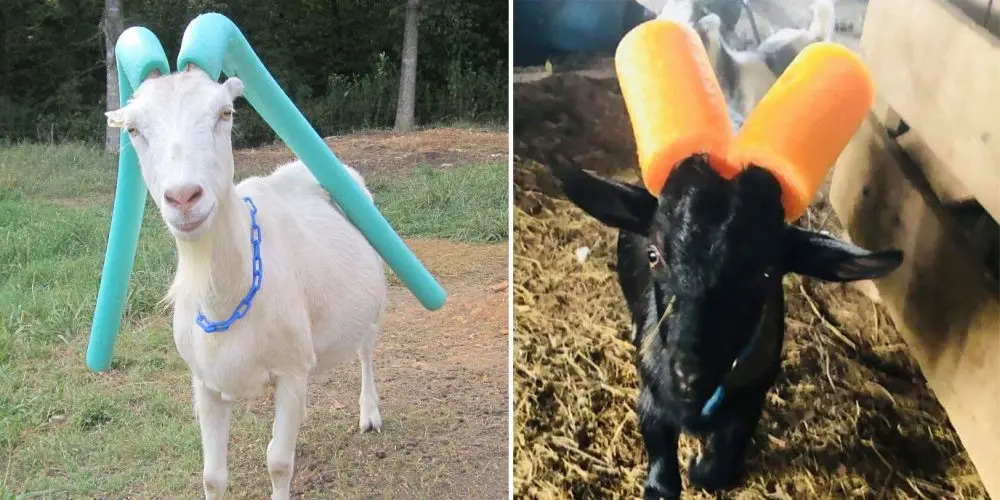Do you love to take care of goats? Then you must be familiar with how they can be a little competitive with each other sometimes. Also, goats are very much playful, though they’re generally calm. In case you see goats misbehaving and head butting, then you might find inspiration from this solution to keep them safe. Here are some funny-looking goats with pool noodles on their horns. Yes, some indeed look funny on them, but the horn caps keep them from hurting you, too.
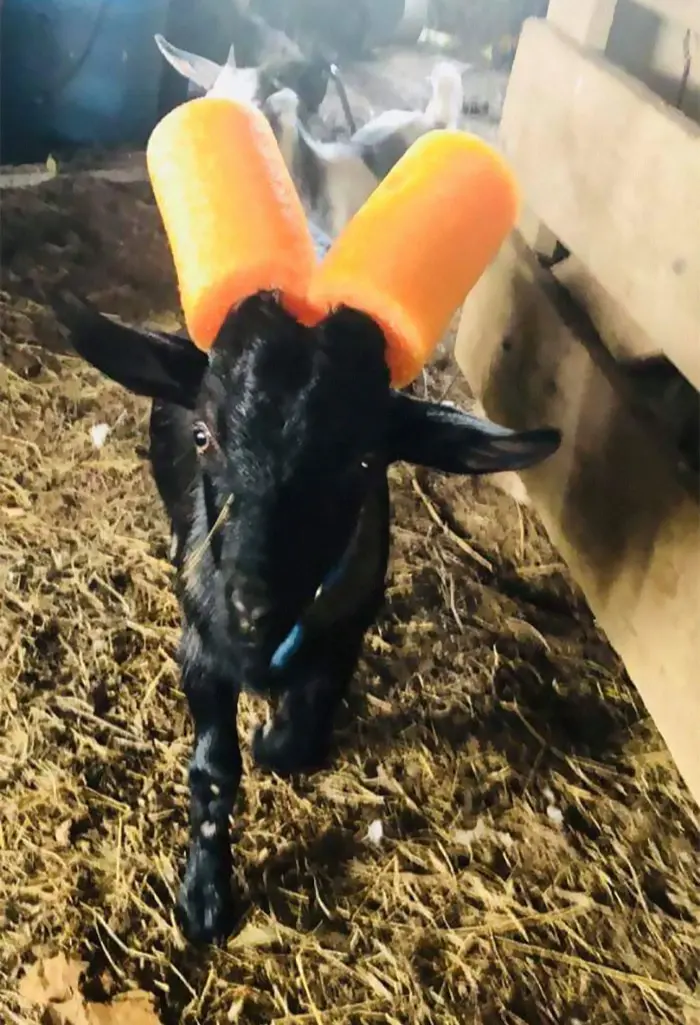

Train your goats while they are young
To minimize their aggressiveness, goats may be best trained while young. But, in case you haven’t done that, there’s a rather funny course of action to keep the safety of your goats. The pool noodle solution provides just that. It looks quite cute on them.
Now, how long might these pool noodles stay on goats’ horns? You might question that. Nevertheless, the pool noodles provide prevention from injury, so in the meantime, the question wouldn’t matter that much.
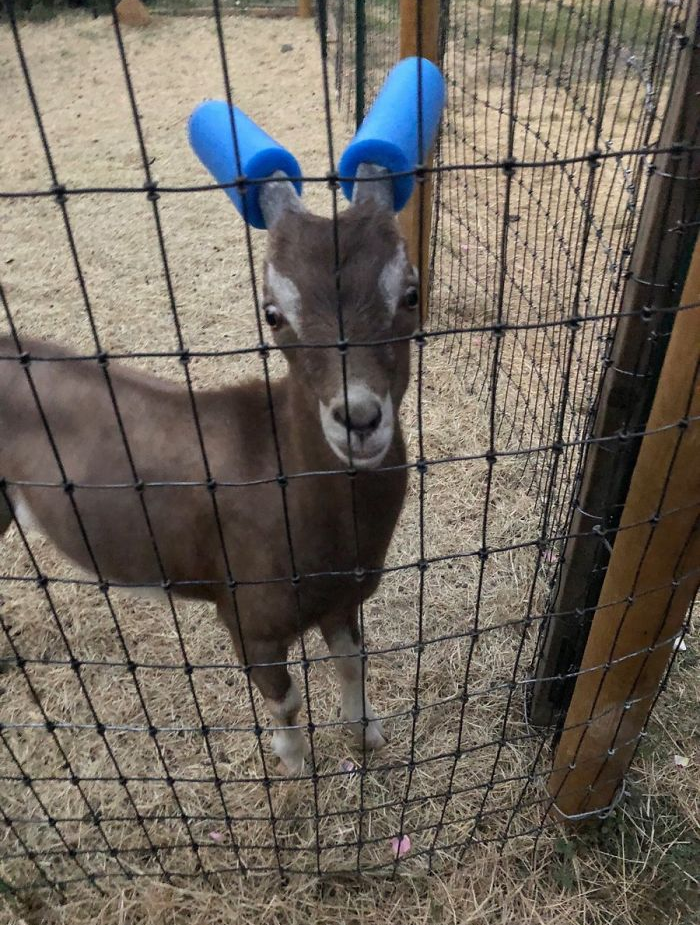

Goats and their aggressive behavior
You might be familiar with how goats can act stubborn and disobedient. Sometimes, they don’t show that much respect, too. Indeed, goats display aggressive behavior. They can bite, kick, and push things or even each other around—and they use their pointy horns to do that.
Goats, however, don’t always do head butting on purpose. Just in case, though, the pool noodles will be able to protect you or the children playing with these goats. You can also use the same pool noodle technique when milking.
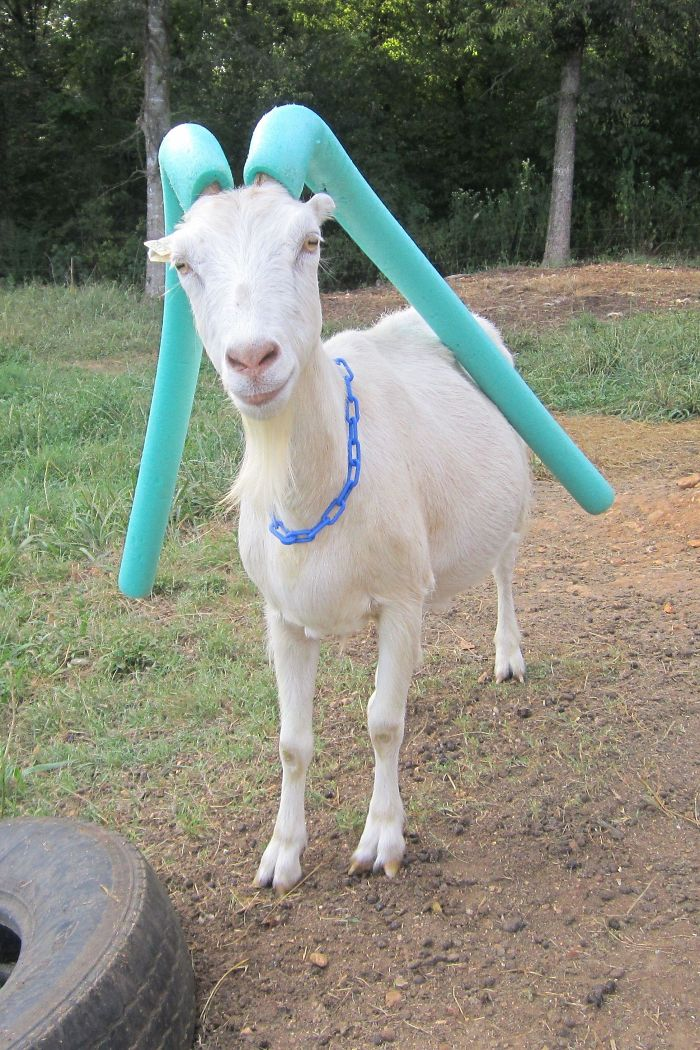
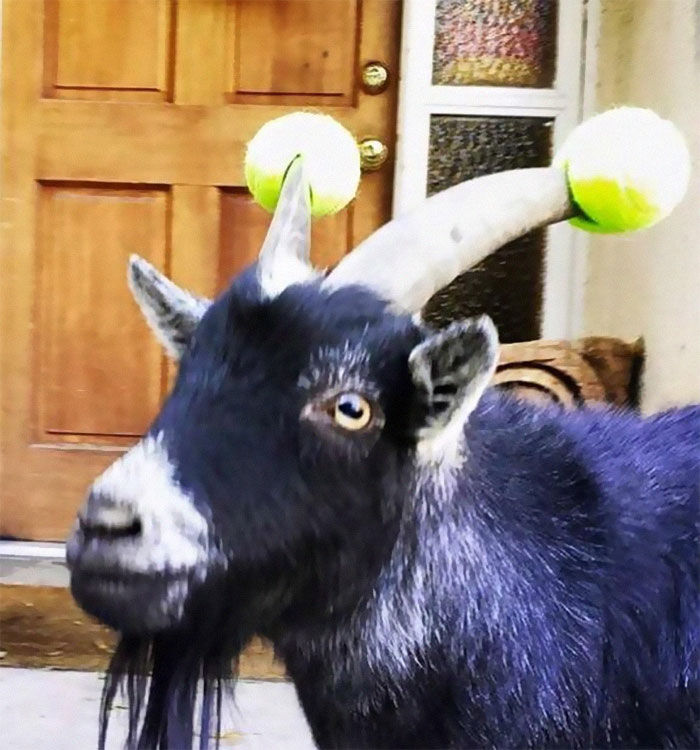

Alternatives to pool noodles for goat safety
Yes, it’s not just pool noodles that can protect goats. You may make use of improvisations such as a bucket and some duct tape. Some even put tennis balls and stick them on the goats’ sharp horns. These work to protect the playful animals from headbutts.
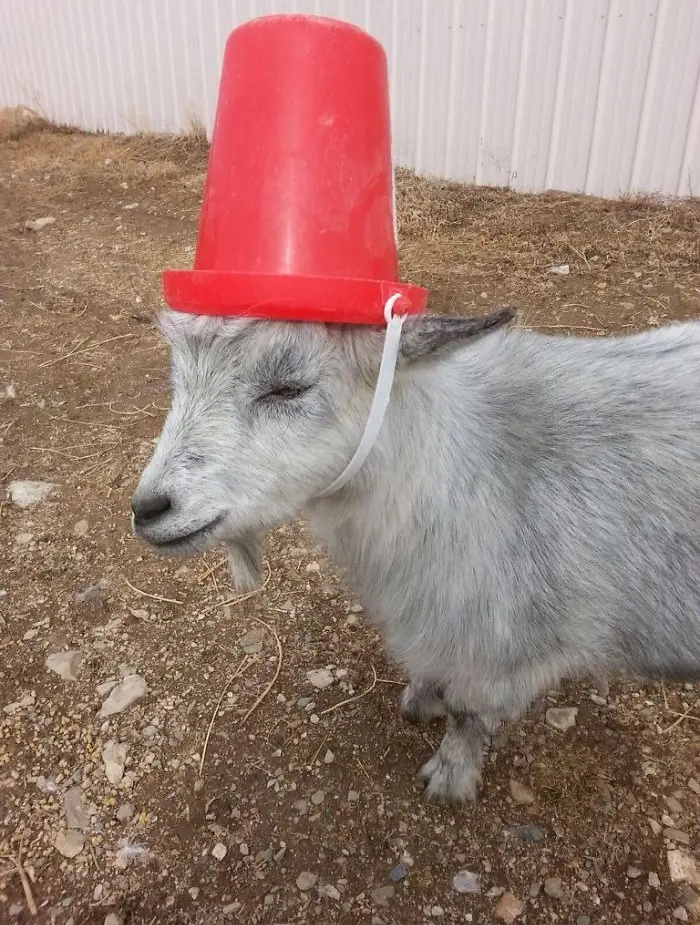

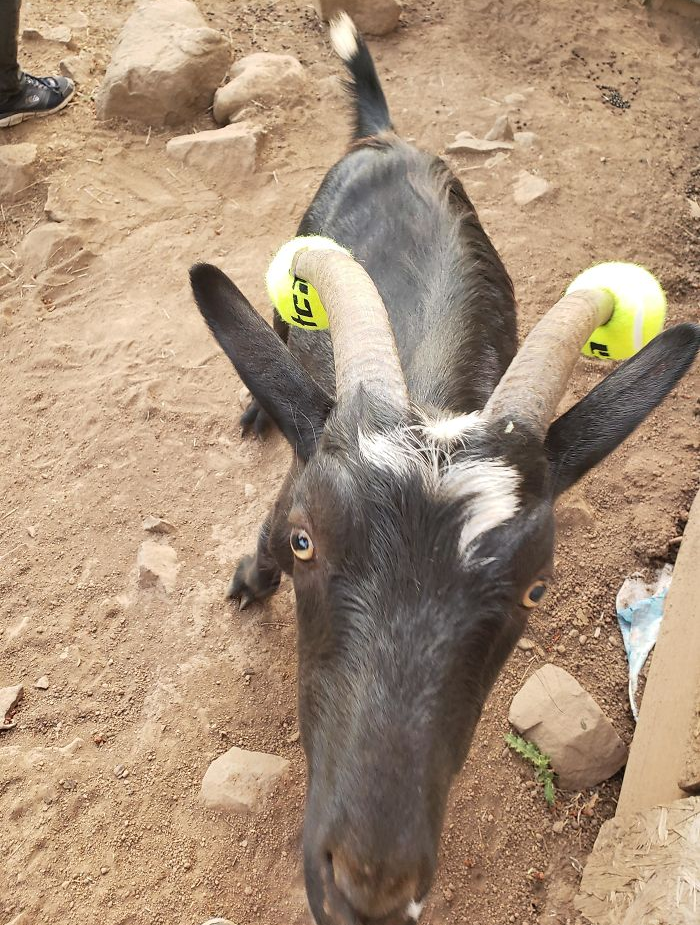

Train your goats if you can
Whichever method it is that you choose to use to protect your goats, keep in mind that it’s still best to train them if you can. Yes, they may be mischievous and stubborn, but just stay patient with them.
Anyhow, you’d most likely find yourself having fun and laughing as you watch the creatures roaming around with the pool noodles of varying attractive colors on their horns!
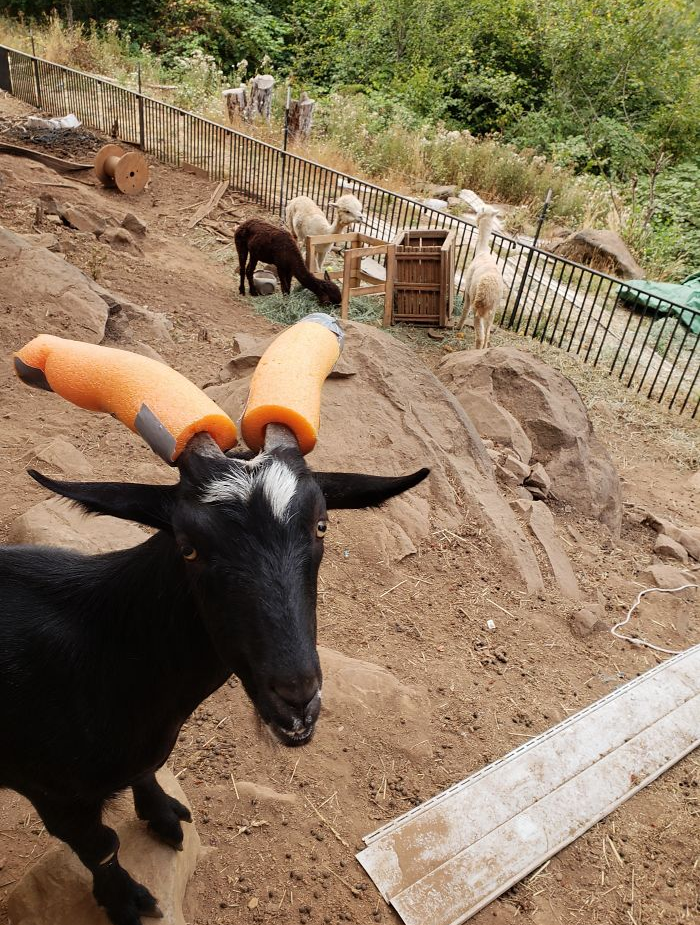

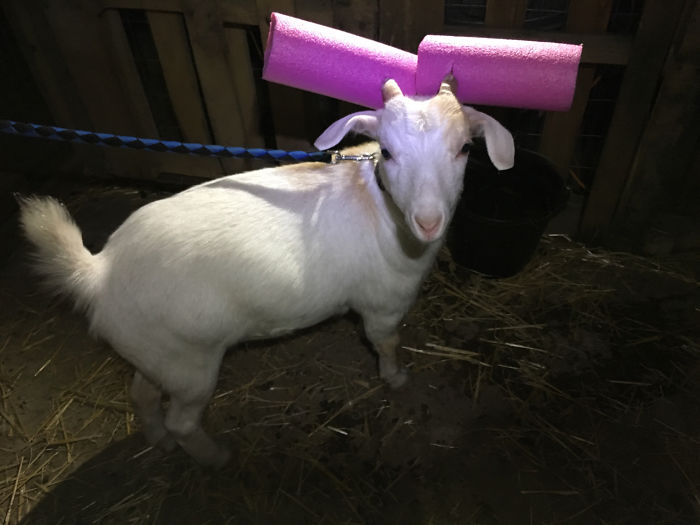
Meanwhile, people at Dummies would argue that goats are indeed teachable. Just as you would train a dog, you can make use of clicker training, for instance, on goats. They say:
“You need a clicker, which is a mechanical device that makes a click sound, and treats such as peanuts or flakes of cereal.”
“By combining the click with a treat, you reinforce that the goat is doing the right thing. You need to start by getting the goat to make a connection between the clicker and a treat. To do this, click the clicker and then give the goat a treat about 20 to 30 times. Your goat begins to associate the clicker with food and eventually responds to just the clicker, so you don’t have to supply a treat every time.”
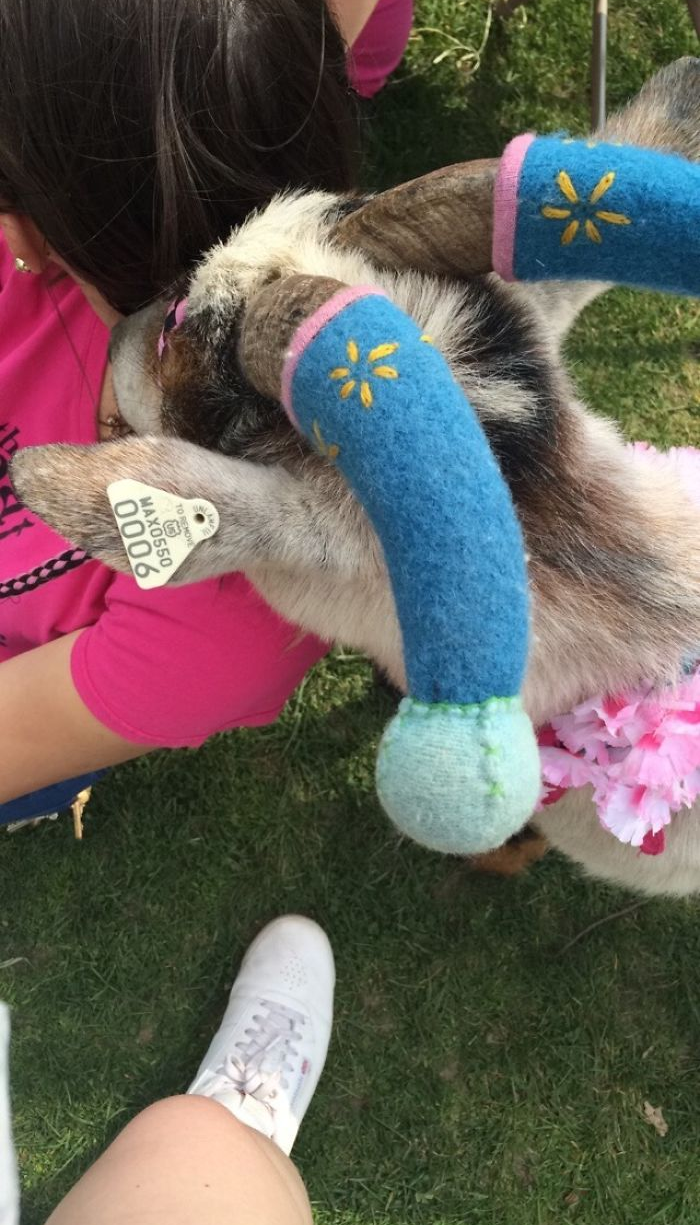
“After you’ve shown the goat that treats are tied to clicks, you can start training. You train by issuing a command (‘Come,’ for example), and then clicking as the goat does what you want it to do and giving the goat a treat after he completes his task.”
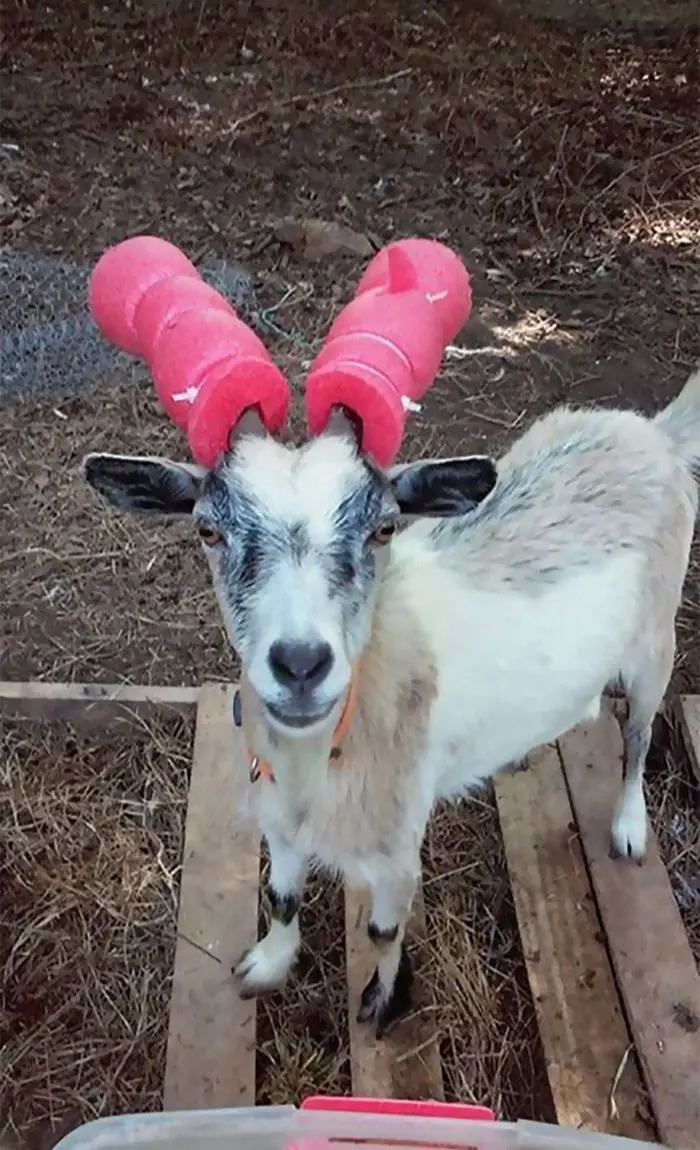

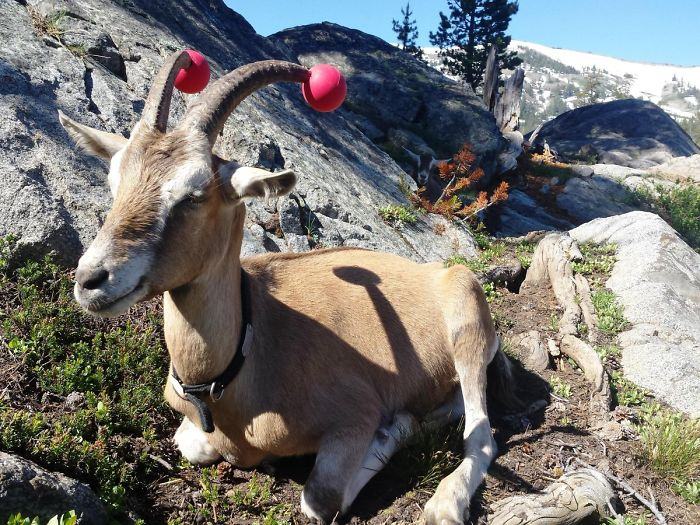
“Of course, the goat won’t follow your command without practice. If the goat doesn’t respond to the command or does the wrong thing, you can just say “wrong” or another word, and then try again. Always click as the goat does the behavior and then give the treat. If you give the treat first, you risk the goat being caught up in eating and not noticing the clicker.”
Here are more goats with pool noodles on their horns.
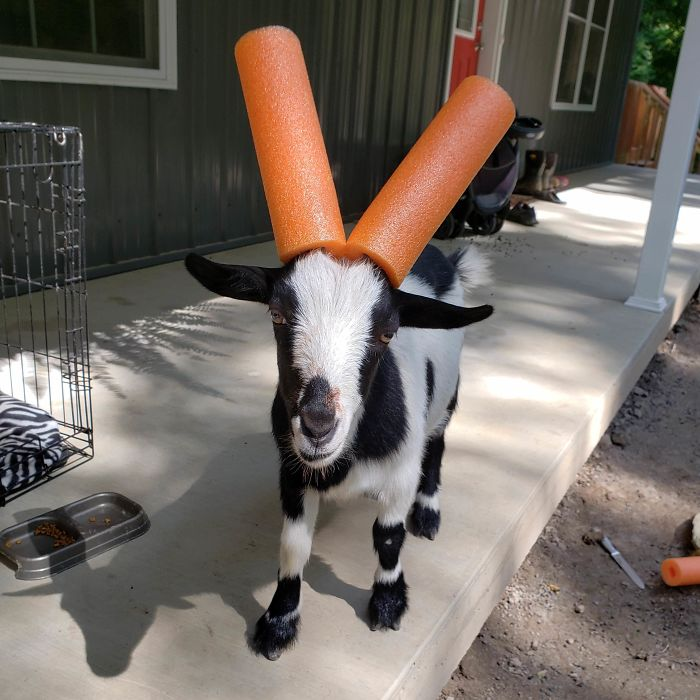
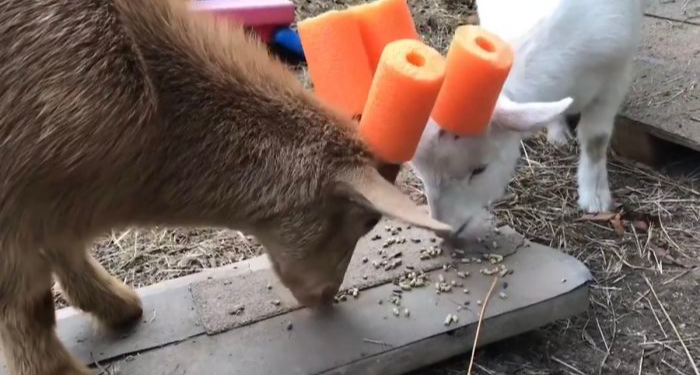
Now, what’s your opinion about goats with pool noodles on their horns? How about clicker training and preventing hazardous headbutts in the first place? Will it work to train a goat to become obedient?
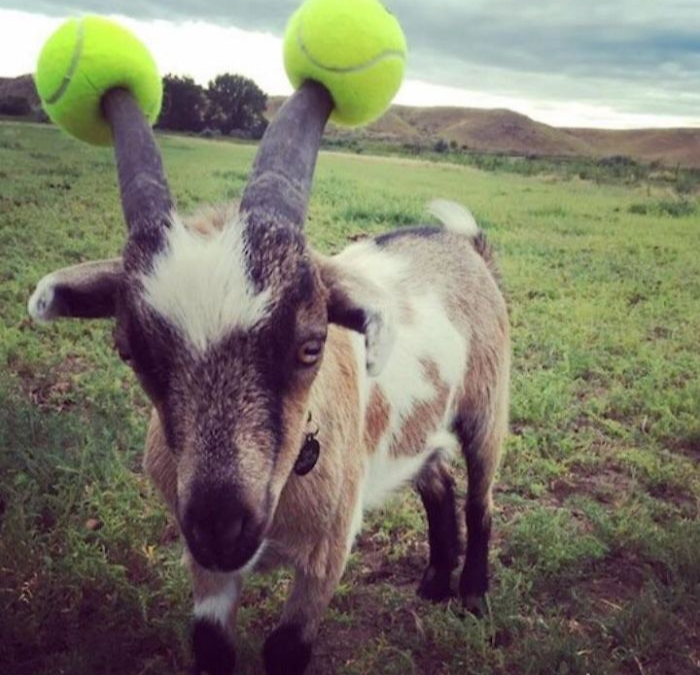
Now, what’s your opinion about goats with pool noodles on their horns? How about clicker training and preventing hazardous headbutts in the first place? Will it work to train a goat to become obedient?
Let us know your thoughts in the comments below.

